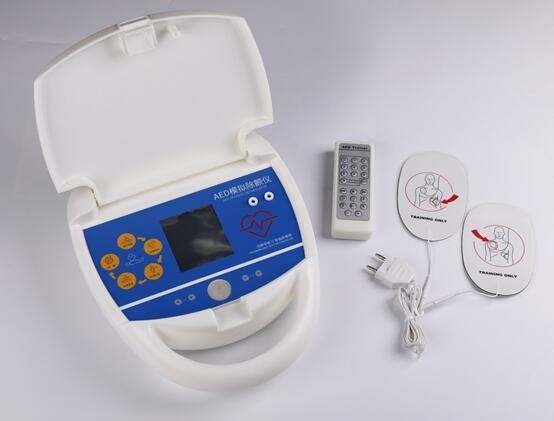Homepageпјҡ NEWS >> How can an analog defibrillator ensure safety during training?
In terms of ensuring safety during training, a number of measures are taken to ensure the safety of the trainees, the training environment and the equipment. The following is a specific analysis and summary of these measures:

1. Defibrillation without high voltage electric shock
The biggest difference between an analog defibrillator and a real AED (Automatic External defibrillator) is that it does not have the actual function of high-voltage shock defibrillation. This means that the simulated defibrillator does not deliver a real high-voltage electric shock during training, thus avoiding the risk of electric shock due to misoperation or equipment failure. This design fundamentally guarantees the safety of trainees and simulators (if used).
Second, the whole voice prompt
Analog defibrillators are usually equipped with a whole-process voice prompt function, which plays an important role in safety guidance during training. Voice prompts guide students to follow the correct steps, such as placing electrodes, selecting energy dosages, charging and discharging. Through voice prompts, trainees can clearly understand the current operation status and operation requirements, reducing security risks caused by improper operations.
Three, in line with ergonomic design
The simulated defibrillator is designed with ergonomic principles in mind, ensuring that trainees can comfortably and naturally complete various movements during operation. For example, the key layout of the device is reasonable, the operation interface is clear and easy to understand, and the weight and size are moderate. These designs help reduce fatigue during long training sessions, improve training efficiency, and reduce safety risks due to inconveniences.
Fourth, self-protection mechanism
Some high-end analog defibrillators also have self-protection mechanisms, such as battery power detection, equipment failure self-test and other functions. When the battery is low or the device fails, the analog defibrillator will send a prompt or automatically shut down in time to avoid safety risks caused by equipment problems.
Health and safety standards
Before training with an analog defibrillator, it is necessary to ensure that equipment surfaces and components such as electrodes are cleaned and disinfected. This helps prevent cross-infection and other health problems, and ensures the health and safety of trainees and simulators. In addition, during the training process, it is also necessary to follow the relevant safe operating procedures and precautions, such as wearing gloves, masks and other protective equipment.
In summary, analog defibrillators ensure safety during training through non-high-voltage shock defibrillation operation, whole-process voice prompts, ergonomic design, self-protection mechanisms, and hygiene and safety standards. These measures together constitute a perfect security system, providing students with a safe, efficient and real training environment.